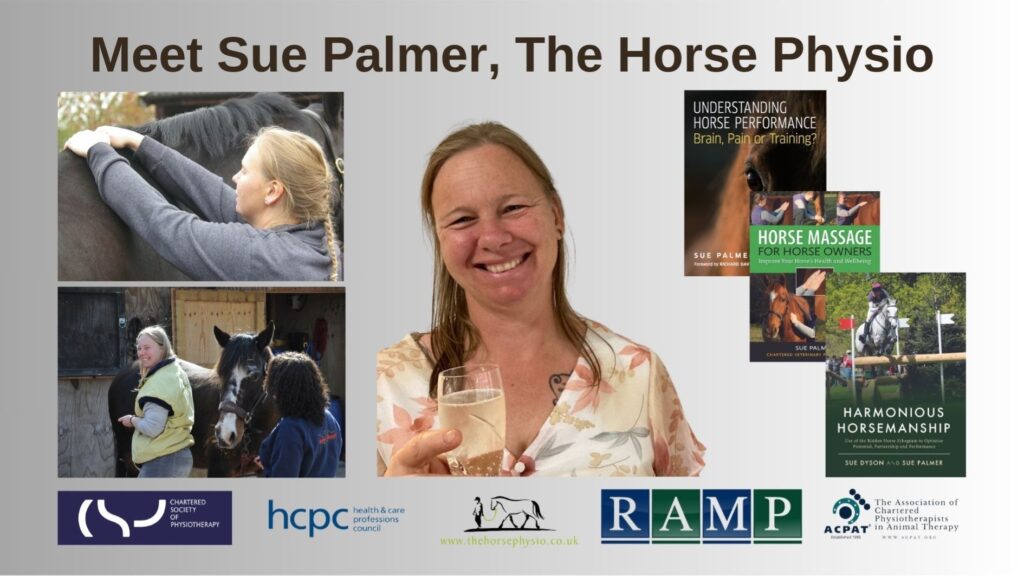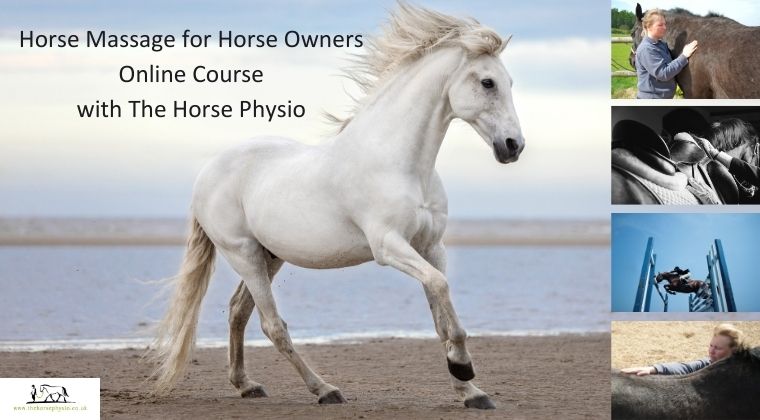In any subject, there are key areas to consider. In this lesson, ‘How Pain Affects Your Horse’, I’ll discuss the ‘5W’s’ of pain, the what, why, when, where, and who. I’ll also include the ‘H’ of ‘how’.
The International Association for the Study of Pain (ISAP) defines pain as “An unpleasant sensory and emotional experience associated with, or resembling that associated with, actual or potential tissue damage.” Short-term pain is called ‘acute pain’, and long-term pain is called ‘persistent’ or ‘chronic’ pain. Pain that comes and goes is called ‘recurrent’ or ‘intermittent’. Pain is a complex phenomenon involving our whole body, and the experience of pain can change from one day to the next.
Pain usually serves an important protective role. It can act like an alarm, telling us that something is wrong. The pain might cause us to remove ourselves from the danger (for example, we pull our hand away if it gets too close to the fire) or to rest or seek medical attention to treat the cause of the pain (for example, we rest until an injured leg is recovered, or we put a dressing on a wound). Pain affects how we feel, how we behave, and how we perform. Sometimes, it’s obvious what’s causing the pain. There might be heat, swelling, or a wound. Other times, we can’t see where the pain is coming from. As humans, we can use our voices to explain where it hurts and what it feels like. A horse doesn’t have this luxury.
Although pain usually serves a protective role, there are times when pain is less useful. Chronic pain can impact our lives in many ways, for example, mentally, emotionally and financially, as well as physically. In turn, pain is affected by our life experiences and by how we feel and act. Persistent pain often serves no useful purpose. It’s as though the messages from the nerve fibres to the brain get confused. Persistent pain can lead to significant difficulty in carrying out activities we once found easy. It can impact our sleep patterns, ability to work or play, relationships, and more. Chronic pain can be hard to repair, and it can take time, skill and patience to improve. It’s hard for us to explain how hard it is to live with chronic pain. Just imagine how much harder it must be for a horse, who doesn’t have the luxury of verbal communication.
Pain is a personal experience that can be influenced by internal and external factors and is individual to each of us. Only the person (or horse) in pain can know how the pain feels to them. Pain is transmitted from pain sensors along specialised nerve fibres to our brain. The sensors are found in many different structures of the body, including the skin, muscles, tendons, ligaments, joints, bones, and internal organs. The process of detecting pain is linked directly with the emotional centres of the brain, which means that how we feel affects our pain, and our pain affects how we feel. When we are in pain, we might feel moody, unmotivated, or fed up. Perhaps the same applies to our horses.
The ISAP states, “Verbal description is only one of several behaviours to express pain; inability to communicate does not negate the possibility that a human or a nonhuman animal experiences pain.” Of course, you and I know that horses can feel pain and that pain may affect their behaviour and performance. In the horse world, there continues to be an ongoing debate about what causes pain and how horses respond. An example of this comes from the British Horseracing Authority, which states in its 2011 review of the use of the whip in Horseracing that “The whip currently used in British Horseracing is designed not to cause pain when used appropriately.” This viewpoint is disputed in the 2015 study ‘A Critical Analysis of the British Horseracing Authority’s Review of the Use of the Whip in Horseracing’, which ‘suggests that the BHA’s findings on the welfare impact and justification for whip use are insufficiently defended by the report.’
Horses can only communicate their pain or discomfort through their behaviour or performance, so it is up to us to learn how to interpret their behaviour.
Below is the list of Fifty Signs of ‘Bad Behaviour’ or ‘Poor Performance’, taken from my book, ‘Brain, Pain, or Training?’. This list is compiled from responses to various surveys sent to horse people worldwide, from discussions with clients, and through my experience over many years. It is by no means an exhaustive list. I believe that each of these is a potential indicator of pain in the horse, and the more of these signs that your horse displays, the more likely it is that he is in pain.
1. Napping
2. Bucking
3. Rearing
4. Cold-backed
5. Stiff on one rein
6. Dead to the leg
7. Lazy
8. Unsettled in the contact
9. Strong
10. Bolting
11. Unusually high or low head-carriage
12. Carries head to one side
13. Sticks tongue out
14. Opens mouth
15. Rushes for first few strides when mounted
16. Puts his back up
17. Goes disunited
18. Struggles to pick up correct canter lead
19. Moves laterally more easily in one direction than the other
20. Short-striding
21. Difficulty working through from behind
22. Not connected/difficulty lifting through the back
23. Heavy in the hand
24. Falls in through one shoulder
25. Moves with quarters in on one rein
26. Kicks out when you use your stick
27. ‘Spooky’
28. Does not stand still to be mounted
29. Bends more easily one way than the other
30. Trips/stumbles
31. Refuses fences, knocks them down
32. He tows you to the nearest patch of grass
33. Biting
34. Kicking
35. Barging
36. Head-shy
37. Ear-shy
38. Head-shaking
39. Difficulty putting headcollar or bridle on
40. Hard to load
41. Sensitive to groom
42. Pulls a face when rugged up
43. Pulls a face or kicks out when saddled or girthed up
44. Hides at back of stable when you go to get him
45. Rushes through stable door
46. Badly behaved for farrier
47. Resistant to lifting tail for the tail bandage
48. Stiff first thing in the morning
49. Drags his hind feet
50. Reluctant to pick up his feet when you go to pick them out
In the award-winning documentary from Padma Video, ‘The 24 Behaviors Of The Ridden Horse In Pain: Shifting The Paradigm Of How We See Lameness,’ we are taken on an emotional “ride” through the eyes of a young girl who loves her horse and will stop at nothing to figure out how to make her comfortable. In the book ‘Harmonious Horsemanship’, Dr Sue Dyson and I explain the 24 behaviours of the Ridden Horse Pain Ethogram (also known as the Ridden Horse Performance Checklist), which you can use with your own horse to detect pain in its ridden work.
Pain is an important and complex phenomenon that helps to keep us safe. It is a unique experience; only the individual can describe how their pain affects them. As humans, we can communicate our pain verbally. Horses do not have this luxury, and it is up to us to learn how to interpret their behaviour and performance as communication of their comfort or discomfort.

I’m Sue Palmer, aka The Horse Physio. I’m an author, educator, and award-winning Chartered Physiotherapist registered with the RAMP, the ACPAT, the IHA, the CSP and the HCPC. I specialise in understanding the links between pain and behaviour in horses and promote the kind and fair treatment of horses through education with empathy. To hear more from me, sign up for my free newsletter here.

I’d like you to be aware of my online course, ‘Horse Massage for Horse Owners’. This practical, educational, and easy-to-follow course gives you the knowledge and skills you need to massage your own horse. Enrol today by clicking here.